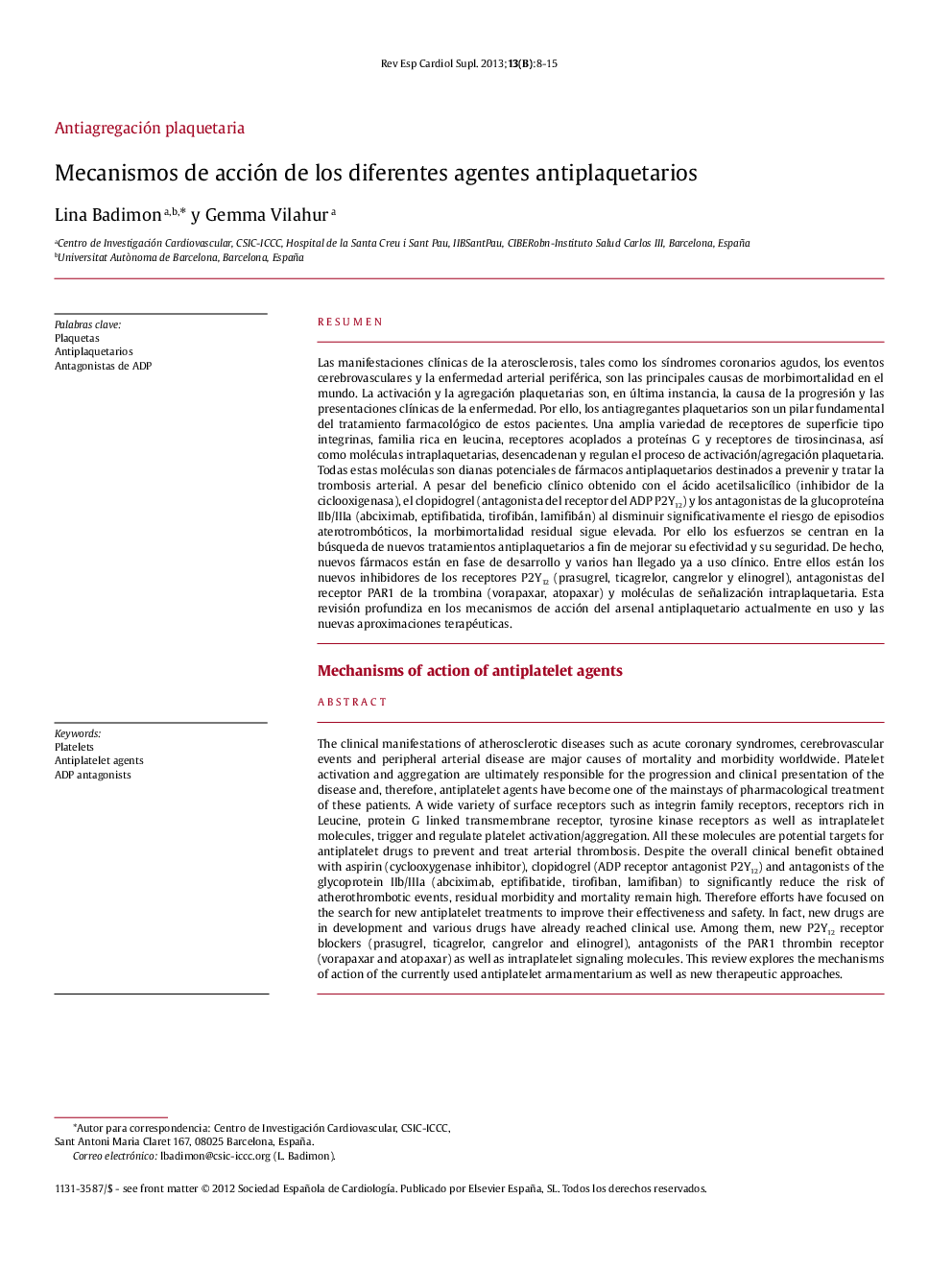| Article ID | Journal | Published Year | Pages | File Type |
|---|---|---|---|---|
| 3019389 | Revista Española de Cardiología Suplementos | 2013 | 8 Pages |
Abstract
The clinical manifestations of atherosclerotic diseases such as acute coronary syndromes, cerebrovascular events and peripheral arterial disease are major causes of mortality and morbidity worldwide. Platelet activation and aggregation are ultimately responsible for the progression and clinical presentation of the disease and, therefore, antiplatelet agents have become one of the mainstays of pharmacological treatment of these patients. A wide variety of surface receptors such as integrin family receptors, receptors rich in Leucine, protein G linked transmembrane receptor, tyrosine kinase receptors as well as intraplatelet molecules, trigger and regulate platelet activation/aggregation. All these molecules are potential targets for antiplatelet drugs to prevent and treat arterial thrombosis. Despite the overall clinical benefit obtained with aspirin (cyclooxygenase inhibitor), clopidogrel (ADP receptor antagonist P2Y12) and antagonists of the glycoprotein IIb/IIIa (abciximab, eptifibatide, tirofiban, lamifiban) to significantly reduce the risk of atherothrombotic events, residual morbidity and mortality remain high. Therefore efforts have focused on the search for new antiplatelet treatments to improve their effectiveness and safety. In fact, new drugs are in development and various drugs have already reached clinical use. Among them, new P2Y12 receptor blockers (prasugrel, ticagrelor, cangrelor and elinogrel), antagonists of the PAR1 thrombin receptor (vorapaxar and atopaxar) as well as intraplatelet signaling molecules. This review explores the mechanisms of action of the currently used antiplatelet armamentarium as well as new therapeutic approaches.
Related Topics
Health Sciences
Medicine and Dentistry
Cardiology and Cardiovascular Medicine
Authors
Lina Badimon, Gemma Vilahur,
